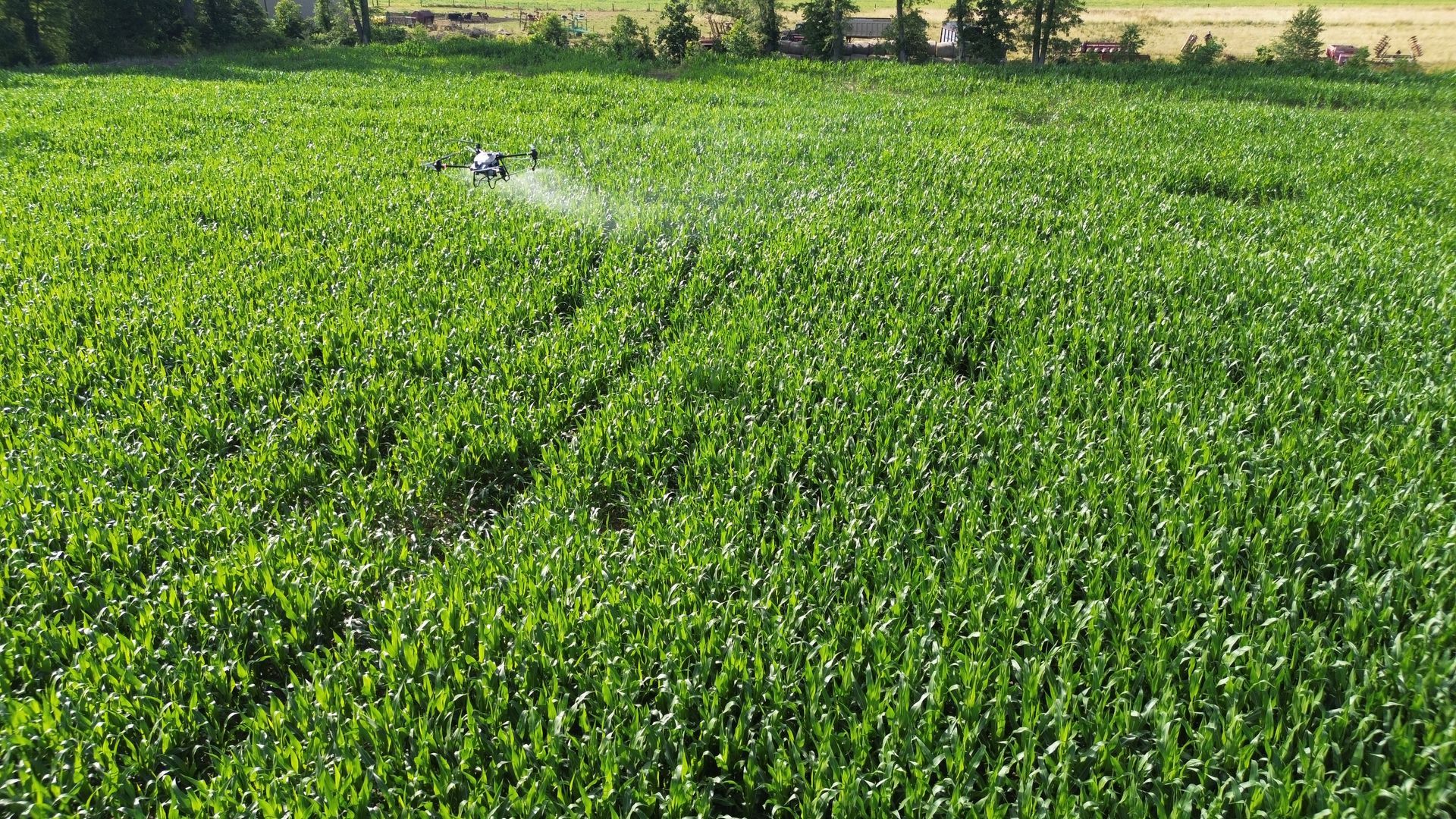To spray or not to spray?

Fungicide applications: the determining factors to be considered
Each year, as we approach August, I get the question, “Should I be spraying fungicides and nutritionals?” We often get in the mindset that the crop is laid by, and we put the sprayer up, which leads us as growers to miss out on many opportunities to influence yield and quality in corn and soybeans.
So, to answer the above question, I typically ask, what is the goal of the application? Are we trying to prevent disease? Do we have a disease present, and are we trying to cure the disease? Are we trying to affect test weight? Do we want to keep the plant alive as long as possible to try and capture as much photosynthesis as possible? Are we trying to correct nutrient deficiencies from prior tissue tests? Are there a bunch of insects present that we need to kill? Numerous things should be considered to answer the question “Should I be spraying?” but most generally, the answer is YES!!! The reason I think the answer is YES is that we have the ability to influence all the reasons above. Higher test weights, healthier plants, greener plants, better standability, better grain quality, higher yields, and better ROI.
How can you make the most of a fungicide application? I want to always pair a fungicide application with Bio-K. We know Bio-K enters the plant the quickest and most efficiently of any nutrient. It also serves as the proverbial school bus, carrying other riders into the plant, like fungicides and other beneficial nutrients.
Which nutritional product should I use with my fungicide? Thankfully, we have several options to choose from, including Bio-K. Products like Triple Option, K-Flex, Finish Line, and NocKout. All are great options for foliar applications in season on corn and soybeans. NocKout has been my favorite for late-season use, especially when paired with fungicides. Comprised of slow-release nitrogen, Bio-K, and some boron, it is an ideal candidate for late season. As a general rule, I always recommend a jar test to make sure we test the compatibility of everything in the tank mix.
As always, if you have any questions, please get in touch with me or your local Nachurs Representative.
Jon Craig, Nachurs District Sales Manager – Southern Ohio, Kentucky













